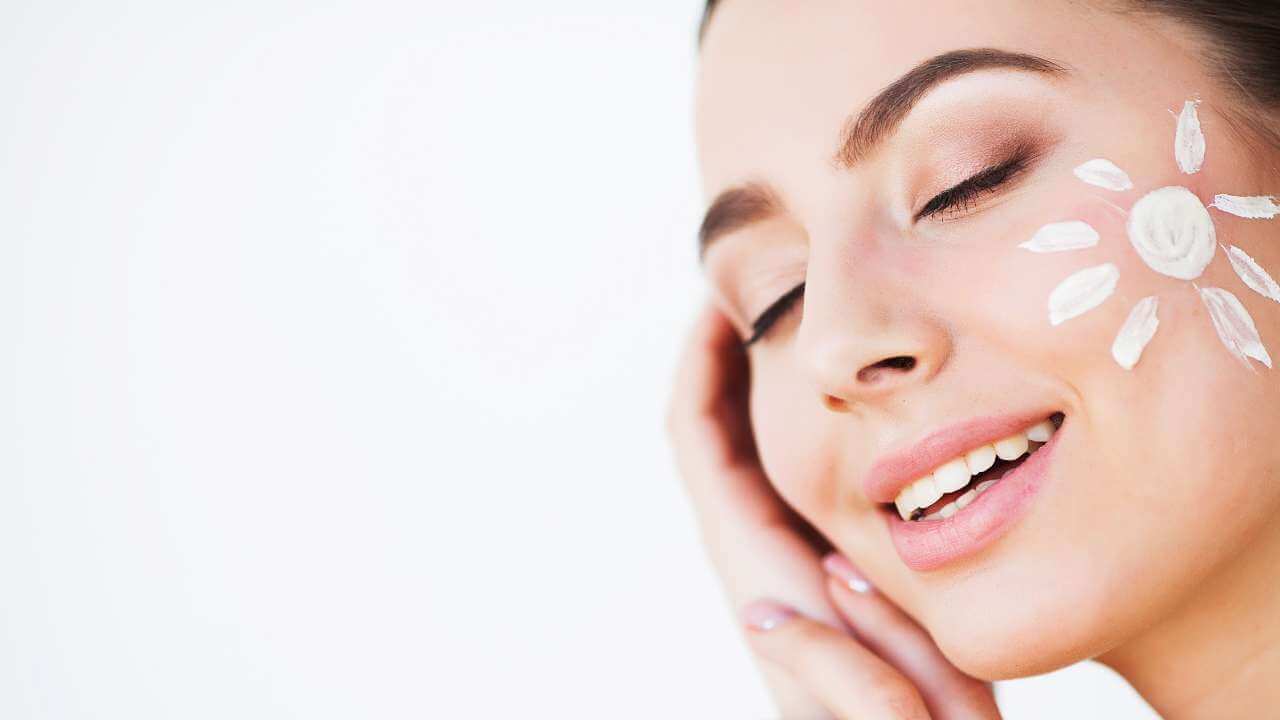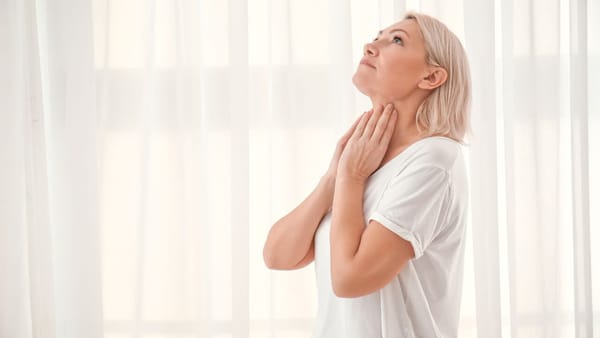Have you noticed sunspots, age spots, or liver spots on your skin?
These are flat, grey, black, or dark brown spots that usually appear on the face, hands, and arms. They can sometimes be a little itchy and may even cause discomfort.
So if you want to get rid of those pesky dark spots for good, then you’ve come to the right place. In this article, we provide all the information needed about how to prevent them from forming as well as treatment options.
Get rid of those annoying spots so you can look your best again!
What are Sunspots?
Sunspots, also known as liver spots, senile lentigo, solar lentigines, or age spots can present themselves in a variety of colors including brown, gray, and black.[1]
These flat skin markings usually arise on parts of the body that are regularly under sun exposure, causing areas of hyperpigmentation around the mouth, face, and hands.
Though these dark patches may begin developing at an early age if you spend plenty of time outdoors, this type of hyperpigmentation will be most apparent when reaching middle age - with multiple clusters of dark marks often appearing together.
Fortunately, sun or age spots is a benign skin condition and does not pose a risk of developing skin cancer.[2] But, it's best practice to have any new patches on your skin examined by an experienced dermatologist just in case!
What Causes Sunspots?
The mechanisms regulating skin pigmentation involve the production of melanin, the pigment responsible for light or dark coloration in our skin. Melanin is a natural pigment in your skin that protects it from the sun’s ultraviolet rays. Excessive sun exposure causes skin barrier damage and triggers an increase in melanin production, leading to the formation of dark spots on the surface of your skin and other pigmentation disorders.
Other factors such as genetics, aging, and certain medications can also contribute to the formation of dark spots on the skin.
Sun exposure is considered to be one of the primary factors that can cause sun or age spots.[3]
Therefore, these discolorations are most likely to appear on areas that receive direct sunlight frequently such as your face, hands, shoulders, upper back, and forearms.
How to Get Rid of Sunspots
Sunspots may not need to be treated, but since they can sometimes look like cancerous moles, a doctor needs to take a look.
If you would prefer to remove them due to cosmetic reasons, there are numerous solutions available such as topical creams like broad-spectrum sunscreen that can help lighten the discoloration.[4]
However, please use caution and steer clear of any substances containing mercury – talk with your healthcare provider if you'd like advice on how best to proceed safely.
If you are looking to lighten or remove age spots, speaking with a board-certified dermatologist is the best first step.
A doctor specializing in skin care can provide advice on which procedure may be right for you and discuss its benefits and risks.
Professional Treatments Include:
1) Cryotherapy
To eradicate age spots, cryotherapy is a reliable option which consists of using a cold substance such as a liquid nitrogen solution to freeze the area.[5]
2) Laser Therapy
Laser treatments or intense pulsed light therapy can be used - this technique involves exposing the age spot with high-intensity beams.[6]
3) Microdermabrasion
If you'd like to target discoloration at a deeper level, microdermabrasion is a powerful option. This medical procedure uses tiny exfoliating crystals to remove the top layer of skin, revealing healthier and brighter-looking skin below.[7]
4) Chemical Peel
Chemical peels use a combination of acids to eliminate dead skin cells and stimulate the production of new cell growth. The treatment fades dark spots and gives your skin an even tone.
How to Prevent Sunspots?
Although sun or age spots can't always be avoided, there are certain steps you can take to reduce your chances of developing them.
- The CDC recommends protecting yourself between 10 a.m. and 4 p.m.when the sun's rays are most intense by steering clear of direct sun exposure.[8]
- Protect your skin daily by applying sunscreen with a minimum SPF of 30 and full UVA/UVB protection for maximum sun protection. A 2018 study revealed that applying SPF (Sun Protection Factor) 30 sunscreen every day is the best way to stop age spots from darkening in the warmer months of spring and summer.[9]
- Make sure to apply sunscreen at least 30 minutes before any sun exposure, and remember to reapply every two hours - especially if you're swimming or perspiring.
- Shield your skin from UV radiation by wearing sun-protective clothing, such as a wide brimmed hat, long pants, and shirts with full sleeves. For optimal protection seek out garments that have a UPF (ultraviolet protection factor) rating of 30 or higher to ensure they're blocking ultraviolet light effectively.
Did We Mention...
Sunspot on Face FAQs?
We know that sunspots on the face can be a source of confusion and frustration for many people.
You may still have questions about what sun or age spots are, how to prevent them, or how to treat them if you already have them. But it's hard to know who to trust with your skin care concerns and where to find reliable information.
Look no further! We've compiled the most frequently asked questions about those pesky dark spots so that you can get all the answers in one place.
Read on for more about protecting yourself from the sun and treating existing sunspots.
Q: How Do Sunspots Affect Fair Skin?
Sun or age spots are more likely to develop on light skin, as people with a lighter complexion tend to be more susceptible to sun damage.
Lighter skin has less melanin, which is the pigment that helps protect against UV radiation from the sun. If you have fair skin and spend a lot of time in the sun, it is important to take steps to protect your skin, such as using sunscreen and wearing protective clothing.
Q: Are Sunspots a Sign of Skin Cancer?
Sunspots are not usually a sign of skin cancer. However, if you notice any growths or changes in your skin tone that look different from other age spots, you should speak to your doctor about having them checked.
Skin cancer can develop in areas where the skin has been exposed to the sun over time and it is important to take steps to identify and address any suspicious changes as quickly as possible.
Q: How Can I Reduce the Appearance of Age Spots?
There are a few treatments that may help to reduce the appearance of sun or age spots. For example, topical creams containing kojic acid and gels containing hydroquinone or retinoids can lighten skin pigmentation. Laser therapy, chemical peels, and dermabrasion can also be used to reduce the appearance of skin lesions caused by age spots.

The Final Mention
Sunspots can be a frustrating problem to deal with, but with the right information and preventative steps, you can reduce the chances of suffering from these discolored patches of skin.
By understanding why sunspots form and the various treatments available to treat them, you can bring back your youthful complexion.
Embrace aging gracefully by taking charge of your health today!
Have any questions or experiences related to sunspots? Let us know in the comment section below.
✅ 9 Sources
HealthMention only uses sources from authoritative and reliable resources, such as peer-reviewed studies, to strengthen the accuracy of our content.
- Choi W, Yin L, Smuda C, Batzer J, Hearing VJ, Kolbe L. Molecular and histological characterization of age spots. Experimental Dermatology. 2017;26(3):242-248. doi:https://doi.org/10.1111/exd.13203
- Detecting Non-Melanoma Skin Cancer. Institute for Quality and Efficiency in Health Care (IQWiG); 2018. Accessed March 24, 2023. https://www.ncbi.nlm.nih.gov/books/NBK321124/
- Cao H, Brehm M, Hynan L, Goff HW. Wrinkles, brown spots, and cancer: Relationship between appearance‐ and health‐based knowledge and sunscreen use. Journal of Cosmetic Dermatology. 2018;18(2):558-562. doi:https://doi.org/10.1111/jocd.12712
- Fatima S, Braunberger T, Mohammad TF, Kohli I, Hamzavi IH. The Role of Sunscreen in Melasma and Postinflammatory Hyperpigmentation. Indian J Dermatol. 2020;65(1):5-10. doi:10.4103/ijd.IJD_295_18
- Prohaska J, Badri T. Cryotherapy. PubMed. Published 2020. https://www.ncbi.nlm.nih.gov/books/NBK482319/
- Lu Q, Yin Z, Shen X, et al. Clinical effects of high-intensity laser therapy on patients with chronic refractory wounds: a randomised controlled trial. BMJ Open. 2021;11(7):e045866. doi:https://doi.org/10.1136/bmjopen-2020-045866
- Shah M, Crane JS. Microdermabrasion. PubMed. Published 2020. https://www.ncbi.nlm.nih.gov/books/NBK535383/
- CDC. Sun Safety. cdc.gov. Published 2019. https://www.cdc.gov/cancer/skin/basic_info/sun-safety.htm
- Josse G, Le Digabel J, Questel E. Protection against summer solar lentigo over‐pigmentation with a SPF 30 daily cream. Skin Research and Technology. 2018;24(3):485-489. doi:https://doi.org/10.1111/srt.12458









